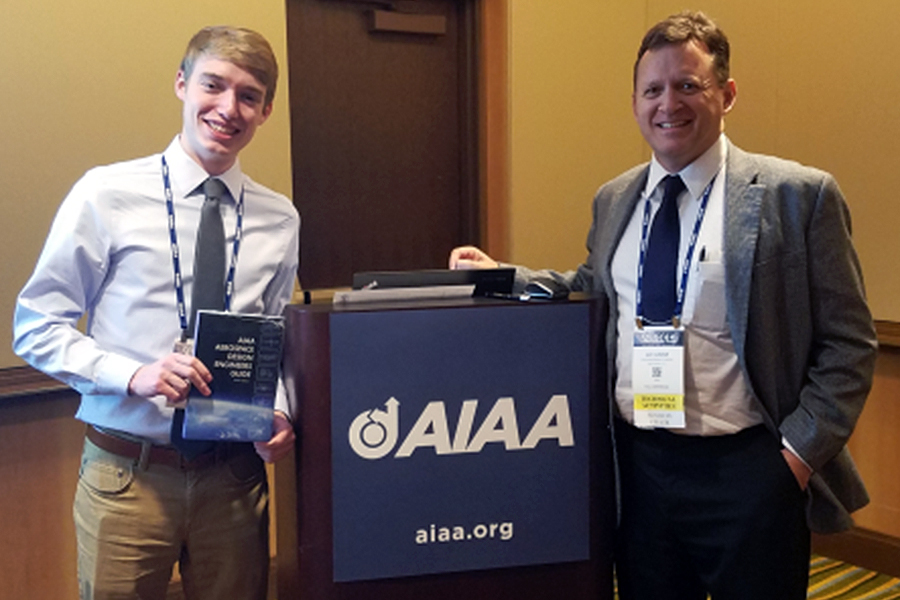Undergraduate student earns 'best in session' at AIAA SciTech

An AAE undergraduate won a “best in session” award at the American Institute of Aeronautics and Astronautics (AIAA) SciTech Forum and Exposition, the largest event for aerospace research, development and technology in the world, held Jan. 6-10 in Orlando, Fla.
Daniel Gochenaur, a junior in the School of Aeronautics and Astronautics, presented a paper in the “Topics in Design Engineering — Design Tools and Processes I” session on January 6. After all six presentations in the session were concluded, Gochenaur learned that his paper, “Validation of Conceptual Hypersonic Design Tool Framework Using X-15 Case Study” was selected by judges as “best in session.”
“I was really surprised to win the award and am extremely grateful for all of the work put into this project by my team at Air Force Research Laboratory (AFRL),” he said. “Presenting at SciTech was a great opportunity, and I wouldn’t have been able to do it without all of their help.”
Traditional aircraft design follows a process in which the design task is typically separated into multiple disciplines that are not fully integrated until the end of the design process. That process has proven to work decently for subsonic and supersonic aircraft, but it has failed for highly integrated hypersonic systems.
Recent hypersonic design research being completed at AFRL has yielded an independent design framework that gives researchers the ability to rapidly generate and analyze hypersonic designs.
By using the X-15 — the hypersonic rocket-powered aircraft that flew 199 flights in the 1950s and 60s — for comparison, the paper attempted to validate a toolset used within the conceptual hypersonic design framework used by researchers within the High Speed Systems Division of AFRL.
“Basically, we attempted to design the X-15 using tools in our framework and compare the results generated by our framework to experimental results from the X-15 program,” Gochenaur said. “That way, we can attempt to quantify the accuracy of the tools in our framework based on their similarity to the findings from a real hypersonic vehicle and flight test program.”
The paper concluded further verification and validation of the toolsets are needed to cover the range of hypersonic system designs. But Gochenaur and the AFRL team determined that designers can have initial confidence that the current tools and framework will produce results that agree with the data generated by a rocket-powered hypersonic vehicle.
